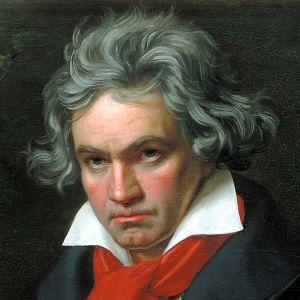You are here
Beethoven's Fifth: Ever Popular, Ever Thrilling!
What is there new to say about Beethoven’s Fifth Symphony? It is, after all, one of the greatest, best-known and frequently played orchestra pieces ever written. It was first performed on Dec. 22, 1808, at the Theater an der Wien in Vienna, along with the premieres of Beethoven’s Sixth Symphony and Fourth Piano Concerto, with Beethoven conducting and at the piano. Oh, for a time machine!
The four-note opening – da da da dummmmm, sometimes referred to as fate knocking at the door – is famous in its own right, endlessly repeated and parodied in popular culture; appropriated for TV commercials; used in children’s TV shows; and even employed as the symbol for victory in World War II. It is the subject of Mathhew Guerrieri’s very fine 2012 book, “The First Four Notes: Beethoven’s Fifth and the Human Imagination.”
One aspect of the symphony that’s not fully appreciated is how tricky the opening is to conduct and play. For one thing the opening note begins right after and not on the downbeat. That means the conductor has to give an “empty” downbeat and the musicians have to enter on the eighth note that immediately follows. Renowned American composer and conductor Gunther Schuller called it “one of the most feared conducting challenges in the entire classical literature.”
ESO maestro Larry Eckerling points out that what’s even more of a challenge is the fifth note, which comes in right after the fermata (hold) in the next measure. “Is there a space? If so, how long? Then there’s the positioning of the bow for the string players. For a seemingly simple matter, there are many issues.”
The relentless repetition of the opening motif, heard countless times in different instruments, registers and keys, is one of the driving engines of the movement, a piston of ferocious energy and momentum. The first movement itself is coiled tight as a spring – angry, tumultuous, and powerful. Many scholars, such as the editors of the “New Grove Dictionary of Music and Musicians,” assert that the same motivic element can be heard in the other three movements and that it serves as a unifying element, while others claim otherwise.
What is not in dispute is the speed of the first movement. Beethoven marked it 108 to the measure, almost unplayably fast. People have since speculated his metronome might have been broken!
Finally, no summary of the Fifth is complete without mentioning the incredibly exciting moment when the third movement C Minor gives way to the C Major in the fourth. No one who has ever heard it can forget it, and hearing it again almost always elicits the same awe and emotion.
Bring forth the Fifth!

Beethoven